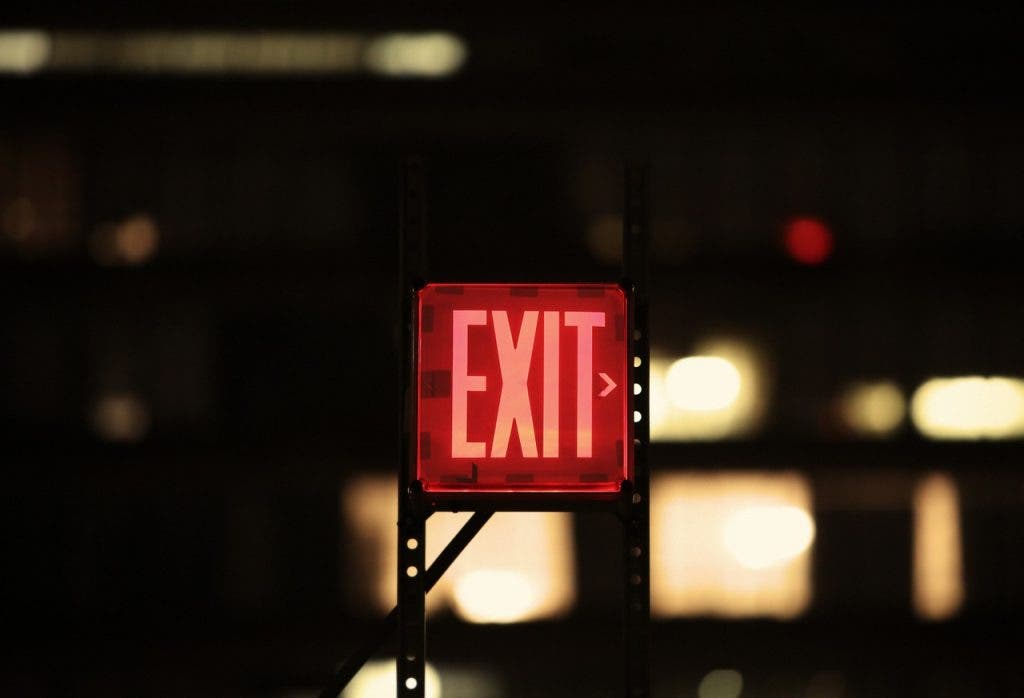You’re standing in a crowded space when suddenly the fire alarm goes off. Do you a) immediately proceed to the exit, or b) wait for other people and head out as part of a group? The answer probably depends on who you’re with at the time, and according to a paper published recently in the journal PLOS ONE, the distinction may be crucial during emergency evacuations.
Increasingly, modern buildings are designed with evacuations in mind, and much of the planning behind the relevant safety protocols relies on the assumption that people evacuate independently in emergency scenarios. But experimental research has shown that people behave very differently depending on whether they are alone in a crowd of strangers, or with a group of people they know. In this new study, a team of scientists working in Germany and the UK wanted to investigate exactly how the presence of social groups affected a crowd’s evacuation.

“In many situations in real life, crowds of humans are forced to walk or move in confined spaces,” said Nikolai Bode, first author on the paper published this March. “Understanding these kinds of situations is really important for the design of buildings or facilities, and for the design of evacuation protocols.”
The protocols in question quite simply aim to minimize the time it takes for people in a building to exit safely in the event of an emergency. Standard protocols are usually based on the idea that individuals move independently towards and through the exit, similar to how grains of sand trickle through the neck of an hourglass.
But anecdotal observations of emergency situations, as well as handful of experiments replicating evacuation scenarios, have shown – perhaps not surprisingly – that real people don’t always behave like grains of sand.
“Often, people split up into smaller social groups according to friendship or kinship,” said Bode, adding that these groups can increase the time it takes a crowd to exit a room. “But so far it’s been difficult for people to study that in a systematic way in controlled experiments. It’s not so understood what the differences between individuals in social groups and independent individuals are.”
In order to pin down these differences, Bode and his colleagues set up a mini evacuation scenario. They assembled “crowds” of 12 participants inside an experimental room with several exits. Each crowd took part in two experiments, one where participants followed the instruction to leave the room individually, and one where they followed the instruction to stay in a group of three people until they’d exited. In both settings, people could leave through any of the available exits.
The results of these experiments confirmed what the scientists expected: a crowd made up of small groups takes longer to exit than a crowd of individuals. But they also offered an explanation for why this might be the case.
The researchers found that when people exited as a group, the time it took them to get from their starting positions to the exit increased – not because they moved more slowly, but because they took longer to start moving in the first place. What’s more, even once they had started moving, they took longer to start moving decisively towards the exit they eventually used. In other words, having other people to consider slowed the evacuation process down.
Bode said that although the research is in its early stages, understanding this social element to movement could be useful in organizing different evacuation strategies for different types of crowd.

Imagine, for example, people milling around a train station.
“In the morning on weekdays, you typically have commuter crowds who very often don’t split up into social groups,” he said. “If you go to, say, a weekend, you suddenly may have a lot more social groups.”
An evacuation protocol for a station on a weekend, or indeed a museum, football stadium or other social venue, therefore might need to acknowledge the extra time taken for groups to assemble before exiting, he added.
Of course, in the interest of abiding by ethical guidelines, scientists cannot carry out experiments with real emergencies. But research into how real people move differently when they are with friends or family – and incorporation of that research into building layouts and evacuation protocols – could soon be making public spaces safer for everyone.


